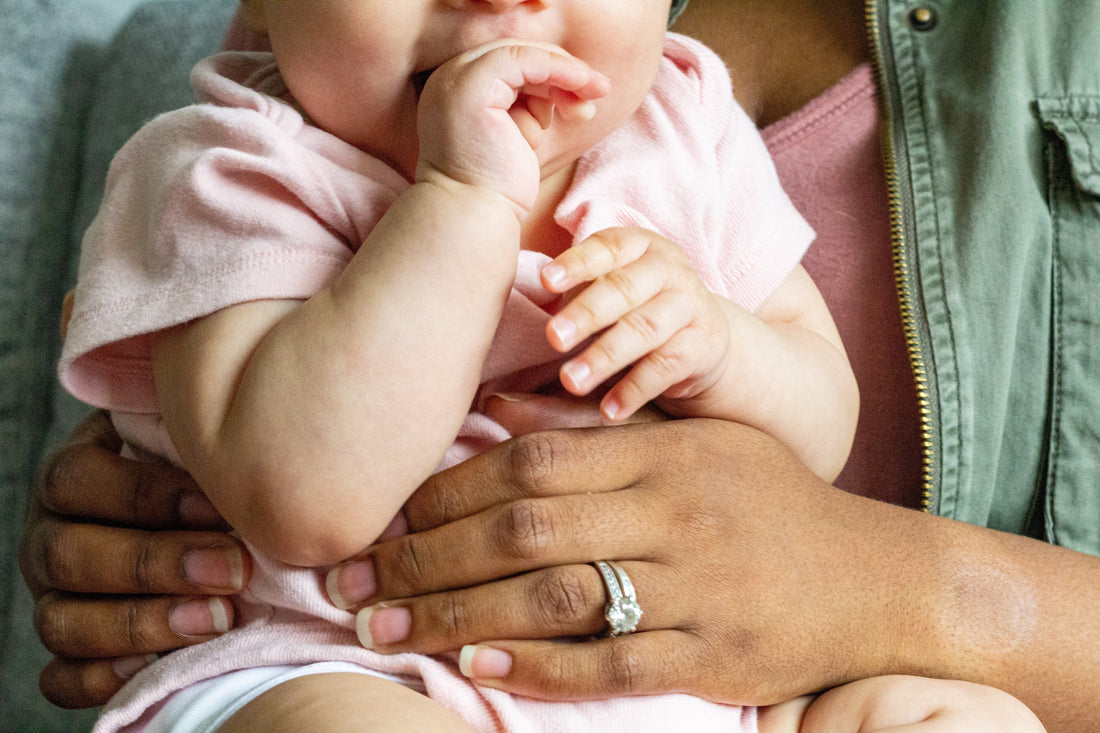
What are the Signs and Symptoms of Teething?
Share
Believe it or not, your little one is born with their baby teeth. They’re just under the gum still and take their time erupting. So when can you expect to see these tooth buds start pushing through your child’s gums and what should you expect during the process?

When does teething begin?
Teething is when your baby’s first tooth begins to erupt and while it can be fun to watch their smile transform, this eruption process can bring on some less than comfortable symptoms. But not to worry, they are manageable and overall short-lived. For some babies, teething can begin as early as 4 months of age or as late as one year and the first ones to expect are the bottom front two teeth. Teething typically ends when the last set of molars come in, usually around the third birthday.
It is common to notice teething signs and symptoms, however, before you see these little buds make their appearance. But, let’s differentiate what is normal to expect during this stage and when you should investigate further.
Common Signs and Symptions Associated with Teething
Excessive Drooling
Irritability and Fussiness
Chewing on things
Slight Increase in Temperature - BUT NOT A FEVER!
Loss of Appetite
Symptoms NOT Associated with Teething
-
Fever > 100.4
-
Diarrhea
-
Rash (different than slight skin irritation around the mouth, chin, neck from drool)
What to Avoid?
-
The U.S. Food and Drug Administration (FDA) advises against numbing topical gels and tablets. Benzocaine, the numbing agent in gel products, can be very harmful to your child and because babies drool so much anyway, the gel wouldn’t even last on their gums. Avoid purchasing products under the product name Anbesol, Hurricaine, Orajel, Baby Orajel and Orabase to treat teething pain. Homeopathic teething tablets have been tested by the FDA and may contain a toxic substance, belladonna, which can contribute to seizures and troubled breathing according to the Mayo Clinic.
-
Frozen or liquid filled teething rings
-
The FDA warns against teething necklaces and jewelry because the beads may break and lead to choking or the jewelry may become a strangulation hazard
The signs and symptoms associated with teething may also be related to a cold or minor illness. Teething symptoms are typically short-lived and can be managed at home. If you suspect your child is not feeling their best, consider contacting your pediatrician. And remember, once your child’s teeth begin erupting, it’s important to keep them clean by brushing or cleaning with the Grin baby silicone finger brush or damp cloth to keep bacteria associated with cavities away!

About the author
Kristen Cockrell, MS, RDH. Kristen is a Registered Dental Hygienist with a passion for preventive pediatric dentistry and oral health education. Kristen earned her master’s degree in dental hygiene education at the University of North Carolina at Chapel Hill.
Thanks to Sarah Liebkemann for the educational graphic @sll.stories
Reference
U.S. Food and Drug Administration (FDA), Mayo Clinic, American Dental Association (ADA)
Photo credits to our beautiful Grin mama @rebeccabrooketaylor
